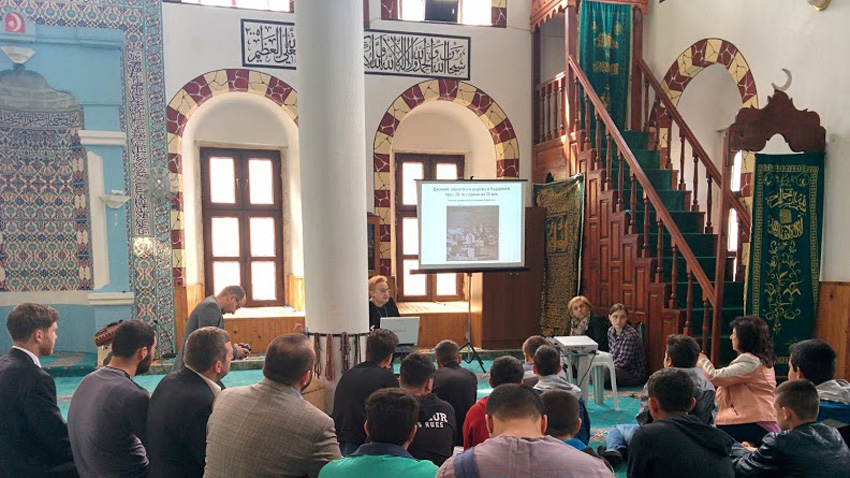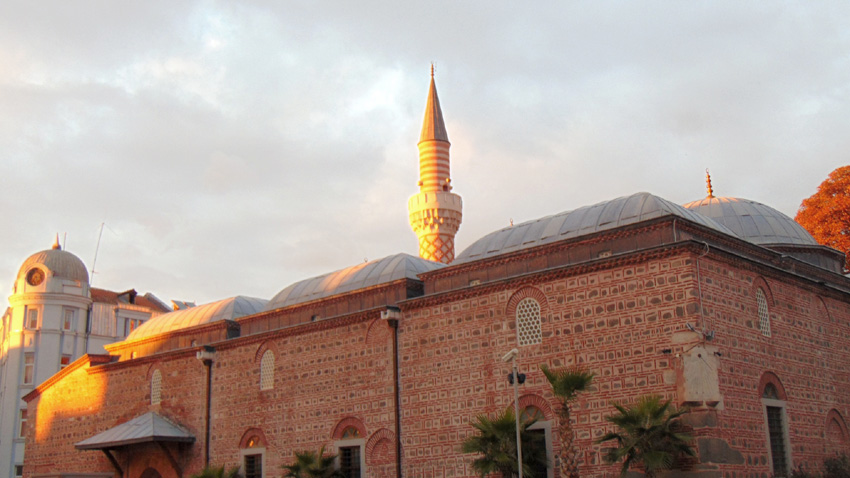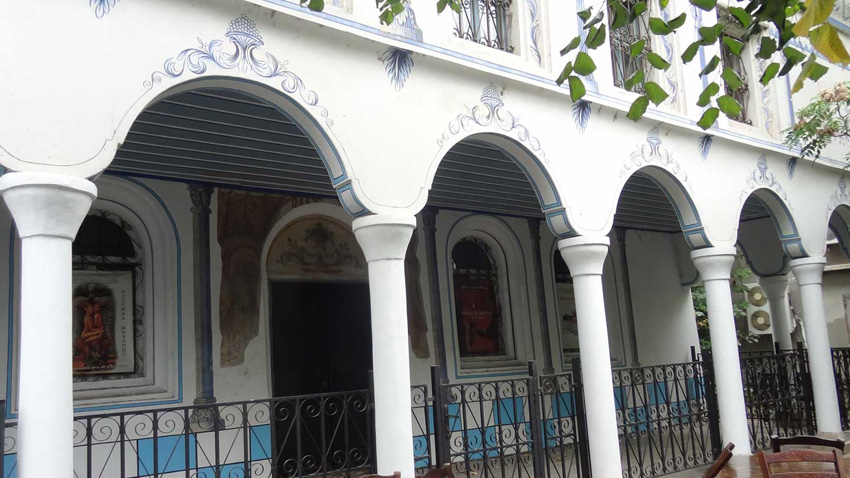On the eve of the Eid al-Fitr Muslim feast and within the frameworks of the Kardzhali: Multicultural Town initiative, the local Mosque opened doors for a public lecture entitled "The Ottoman Architectural Tradition in Bulgaria: Muslim and Jewish Temples of Prayer".
The multimedia presentation was made by the Krug (Circle) Art Movement, based on scientific historical research displaying archive photos and documents of over 20 mosques, masterpieces of big Ottoman architect Mimar Sinan /1488 – 1588/ among them. Several surviving synagogues from the Ottoman and post-Ottoman period were presented in the respective segment.
Let’s recall that what’s Bulgarian territory today has preserved archaeological data since ancient times, testifying to Jewish presence – for instance the unique mosaics from a synagogue dated to the 3 – 4th c. AD, discovered in the area of the Sveta Petka Church, Plovdiv.

Students from the village of Enchec had the chance to learn about the similarities and differences, concerning the ritual usages of the cult buildings of both religions. District Mufti Beyhan Mehmed was a guest and also host of the event.
Radost Nikolaveva, an organizer and lecturer, presented the most impressive examples of the Ottoman architectural heritage, such as Tombul Mosque in Shumen, Jumaya Mosque and Imaret Mosque in Plovdiv, Osman Pazvantooglu’s Mosque in Vidin, Banya Bashi in Sofia, the Svilengrad Bridge, etc. The presentation accentuated on the millennia-long process of transformation, as each place of worship turned from a Thracian sanctuary into an early-Christian basilica, later on a medieval xhurch, a mosque and then back into a church.
The Krug Art Movement has become the major driving force for bringing close together different cultural communities in Kardzhali in the past 12 years.

“We have been collecting and documenting family memories of Turkish families from the region of Kardzhali for a long time and also of their relatives living in Turkey", Radost Nikolaeva, chair of the association explains. "In 2011, we launched a project entitled Ottoman cult architecture in Bulgaria for the purposes of popular science. Historical research displayd the eternal life of spiritual sites, being transferred from one religion to another. Bulgarian masters took part in the mosques’ construction, styles were passed on from hand to hand and different cultures had their influence. The new thing was that for the first time we got the courage to enter a religious site such as a mosque in order to show the entire diversity and beauty of the Ottoman architecture, including what’s inside Jewish temples…"
Few people know that there used to be a Sephardic Jewish community in Kardzhali. The synagogue was built up in 1924, but suffered a fire in the 1950s and was burnt down. A memorial plaque marks the spot now.

According to Radost Nikolaeva, the event is innovative also thanks to the support of the District Mufti. The Shalom Jewish organization granted to the association memoirs of Ester Niego from Israel, born in Kardzhali in 1935, the daughter of the first local community leader of that time, Nisim Niego. Zafer Galibov, one of the most famous photographers right now, donated to the Krug Movement a CD with pictures of synagogues in their current state. The man himself was born in Vidin, his father was of Turkish and his mother – of Jewish origin. The Jewish community in Kardzhali made it through WWII, but in 1949 they all left for Israel one night onboard a ship from the Black Sea port town of Burgas.
Radost Nikolaeva says that young people in Kardzhali are enthusiastic to participate in the restoration of their diverse cultural heritage. They draw, sing and create art together.
“I am not a fan of talks on tolerance, it is not enough. Tolerance is just a kind of cultural politeness, even cultural distance and indifference. The question is how to encourage all participants to use the multicultural resources, in order to create a new type of culture and civic awareness - the way it happens in Edirne or Palermo, for instance. I would really like see Kardzhali start looking like these places,” Radost Nikolaeva says in conclusion.
English version: Zhivko Stanchev
Bulgaria's Consul General in New York Angel Angelov has taken part in an online discussion organized by an educational platform on Holocaust issues and dedicated to the saving of Bulgarian Jews in the Second World War, BTA reports. A special guest..
An exhibition titled "PICASSO: Graphics from the National Gallery Collection " will open at 18:00 pm this evening at Kvadrat 500 in Sofia. The National Gallery's collection includes twenty-one graphic works by Picasso, thematically connected to his..
Turning a new page, 2025 comes with hope and faith in better days, in peace that will prevail, in happiness and love. On the first day of January - Golyam Sechko, as it is known in the Bulgarian tradition - the mood is upbeat and smiles are everywhere...

+359 2 9336 661
